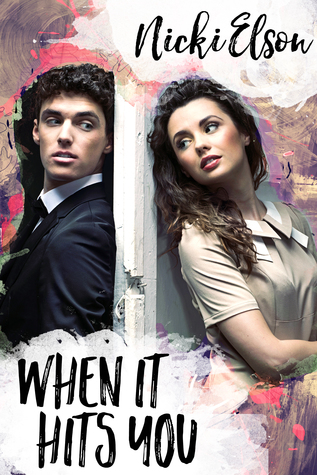
Date Like a Woman was written by Kai Nicole and published on 15 April 2017.
“This is the dating book Millennial women have been waiting for. It offers a fresh non-sexist perspective on dating and gives women the strategies they need for dating success. This book will revolutionize dating for women everywhere.”
I was provided a complementary copy of Date Like a Woman to review. It in no way, shape, or form influenced my opinion/review of the book.
I am who this book is marketed towards.
Single? Check.
Have tried (and failed) at dating? Check.
Millennial? Check.
And on that topic of millennials, I have a great quote from Eliza Schlesinger’s Elder Millennial comedy special on Netflix:
“‘Tell us your ways! We wish to be betrothed as well! Secrets. Tell us. Be a girl’s girl.’ There’s no secret, just so we’re clear. Don’t buy the books, don’t buy the hype. Don’t listen…there’s no secret, okay? And if there was a secret, I would have fucking used it. There’s no secret. There’s no special magic to it. I’m never going to be like, ‘Gather round, ladies. Off the 405 lies a toad hole…you must go to it!”
And that pretty much sums up Date Like a Woman. I’ll admit, there are some good nuggets of wisdom here: the ‘feast or famine’ section made a lot of sense, and I did find myself nodding along with the explanation of how men are competitive.
I’ll also admit that I had (and am having) difficulties trying to cobble up a review. Unfortunately, this book is just lacking content. It’s like trying to judge a glass of water – only so much can be said. Date Like a Woman is only 170 pages, and most of that is repeated words and “this will be focused on more in section X”. And on the topic of repetition, the amount of times I read the same thing on the same page right after one another is tiresome. It’s even more tiresome when random things are bolded to make it seem like it’s brand new information. Consider the passage below:
“If you have low self-esteem, you really need to focus on yourself instead of dating. Having low self-esteem attracts abusive personality types. Bring in an abusive relationship will only make your self-esteem worse. You must first repair any self-esteem issues before you start dating. Low self-esteem is like a homing beacon to asshole and douchebag types of men. They also have low self-esteem and in turn will make you feel bad to make themselves feel better. I highly recommend that if you are dealing with low self-esteem that you seek help from a professional counsellor. Counselling is very helpful. Once you work through your self-esteem issues you will be much happier and in a much better position to date. The truth is you will never be happy dating if you are not already happy with yourself.” (p.43)
That, if you weren’t counting, used the word self-esteem EIGHT times in a paragraph with ten sentences. (Not to mention one of those sentences is “counselling is very helpful” — water is also wet, but you don’t need me to tell you that). It’s hard to read a book when it’s constantly chattering like a broken record for 170 pages. Then, when it goes on to say, “remember when I mentioned X?” you just have to set the book down. Do I remember the thing mentioned five pages ago ten different times? Yeah, I do.
Another thing I struggled with is the constant message of standards and having “no expectations” (a fact that is, of course, bolded). Nicole suggests that no matter the date, being open is important. It’s not about the monetary value. And sure, there’s truth to that. Dates don’t have to be expensive to be fun. But then she goes on to say, “Do you really feel that you are too good to eat at a certain place? Do you feel that you are so special…? You need to assess what insecurities are deep down inside of you.” (61). But honestly? There is no shame in standards. There is no shame in going “no, I don’t want to eat there”. Because honestly? If you want to date me and try to take me to McDonald’s our first time out so we can split a cheeseburger off the value meal, we’re parting ways. No insecurities here, just plain, old-fashioned snobbery.
Also, this book doesn’t want you to read it. Seriously – let me list the people who are told to put the book down:
- Married people
- People looking for marriage
- Pretty much everyone who doesn’t have any interest in just casually dating
That’s a huge chunk of the population. No one likes being told to go away (“seriously, put [this book] down” one line says. “Save your money” another one suggests). Somehow the exclusion presented makes the premise of the book just seem mean. I can only imagine the number of people who were willing to give this book a chance only to read “this book is not for you” and put it down. Dating and romance self-help books are not rare. If you tell someone not to read your book, they won’t.
There are also a few spelling issues here and there along with formatting problems.
So overall, while Date Like a Woman isn’t necessarily filled with bad advice, it’s just not filled with anything I haven’t read before. You’re probably better off reading a Cosmo magazine and letting Elder Millennial play in the background.
2 out of 5 stars.
*Blurb by Goodreads.









